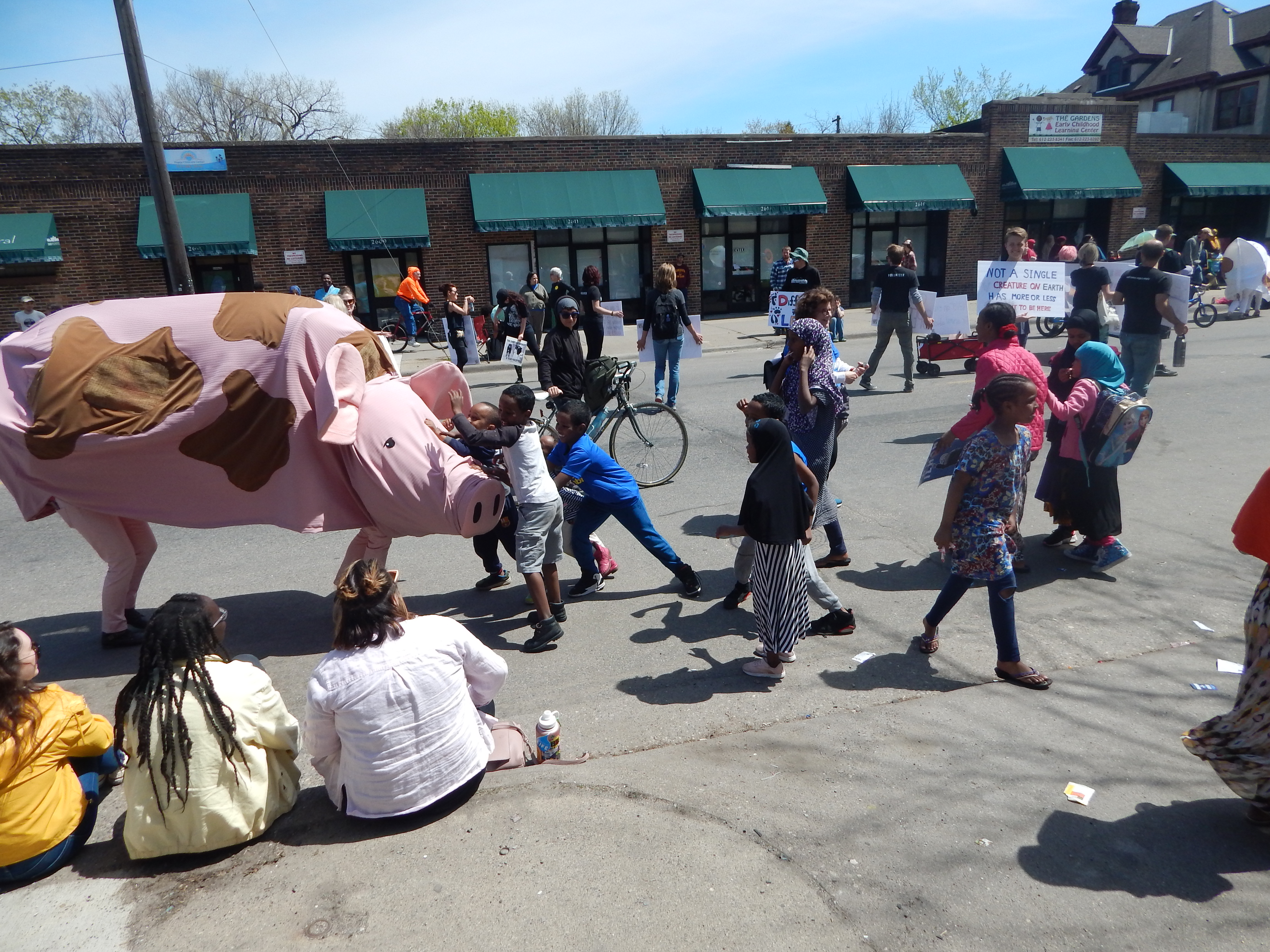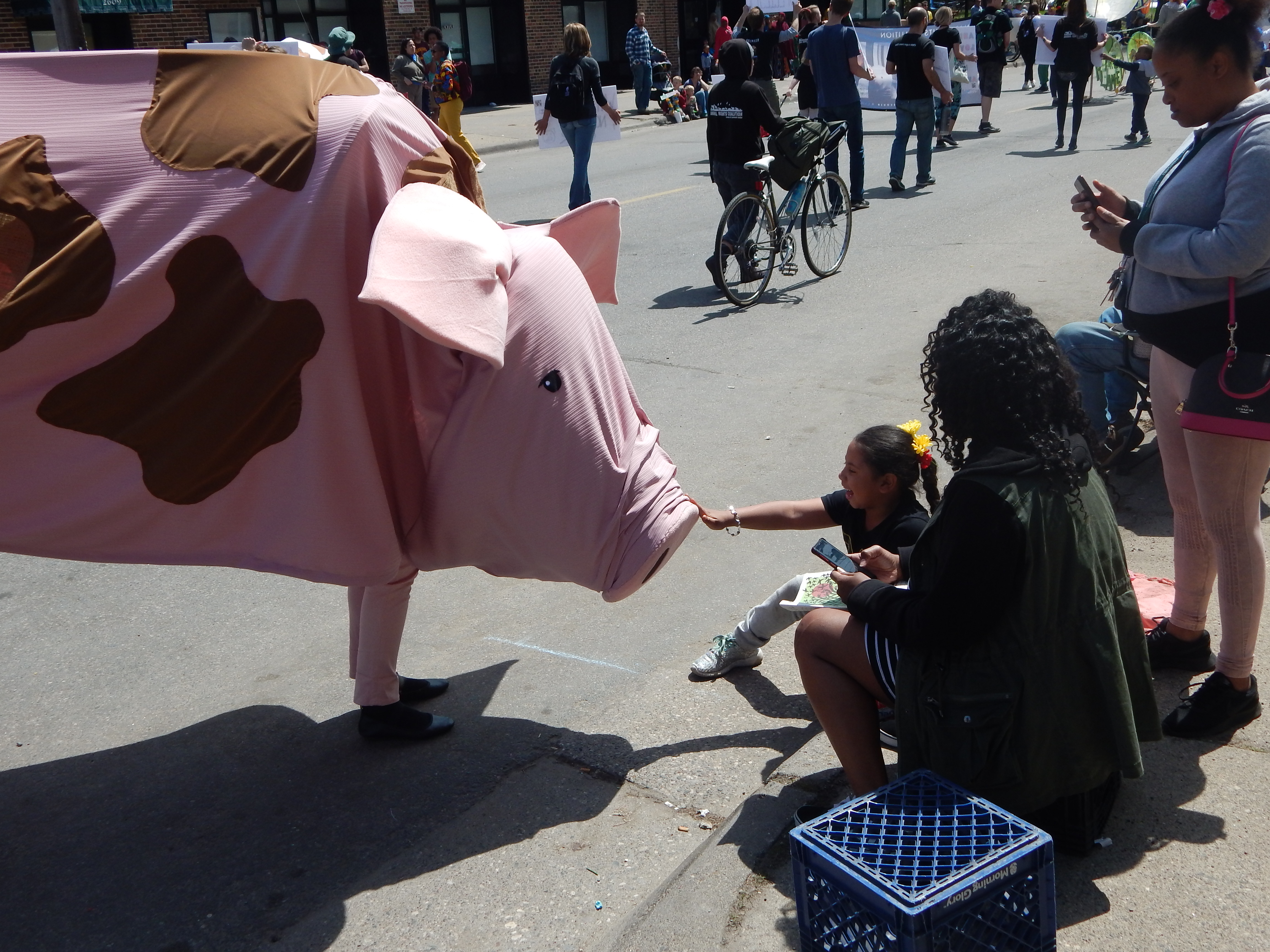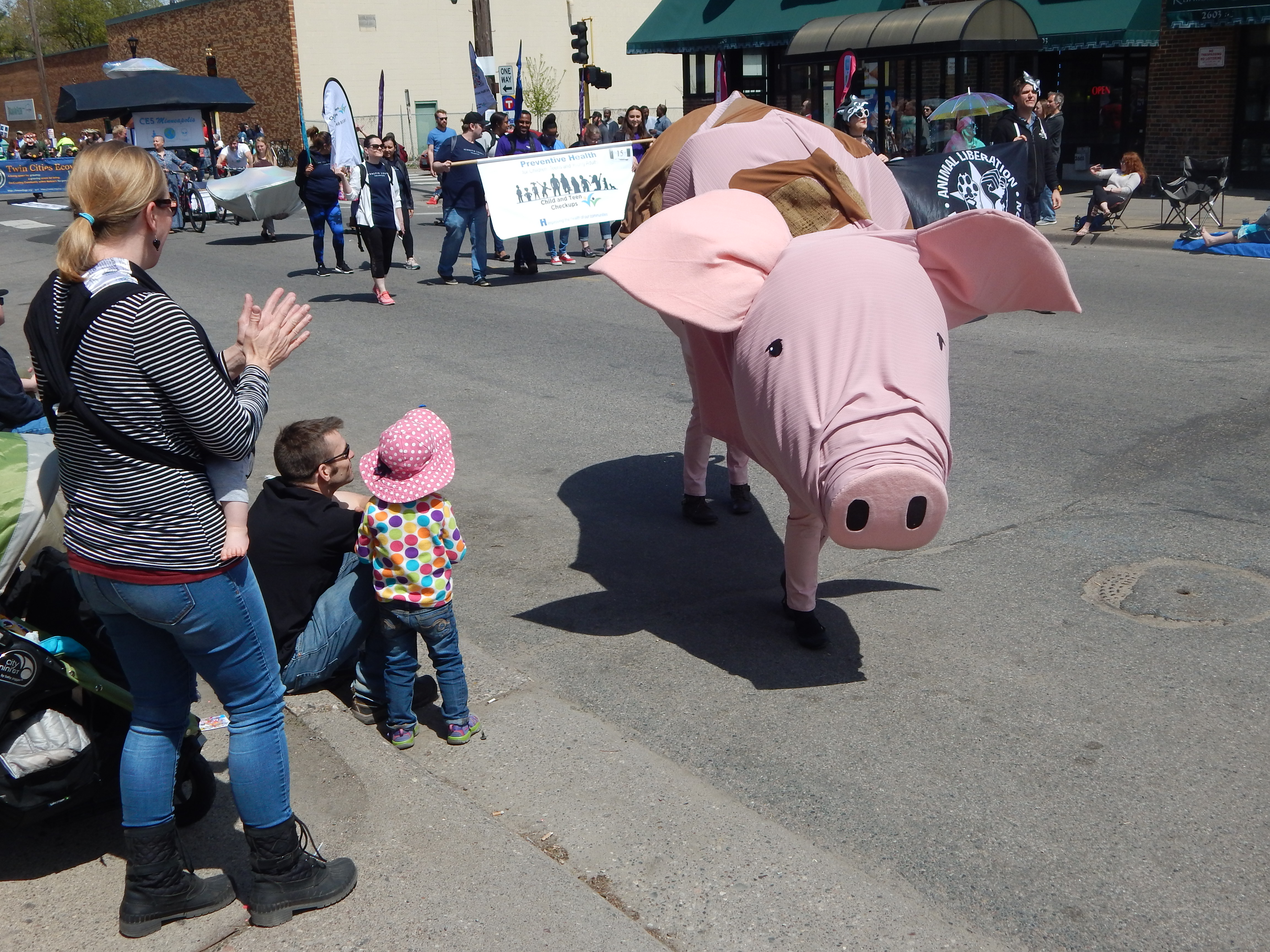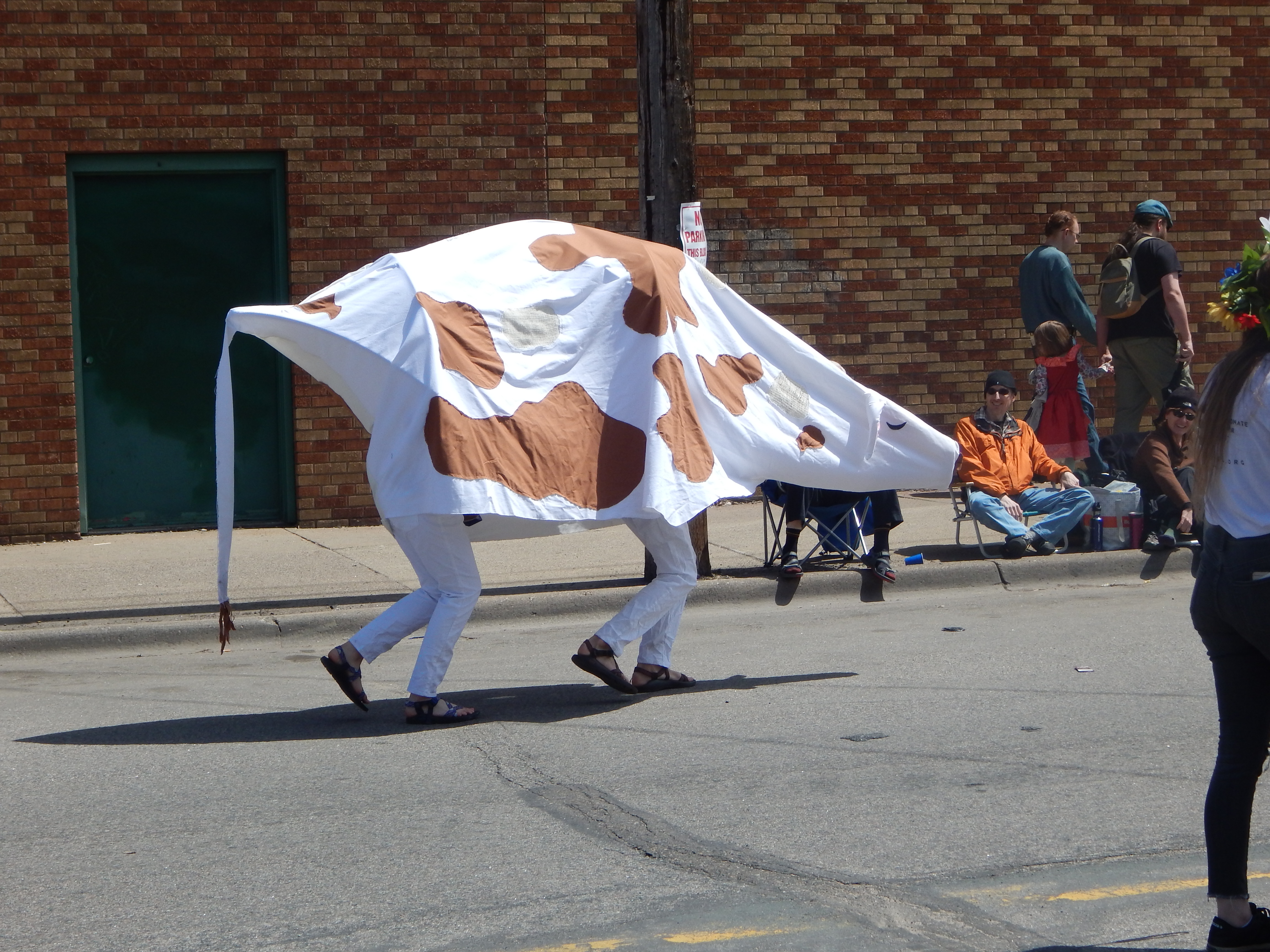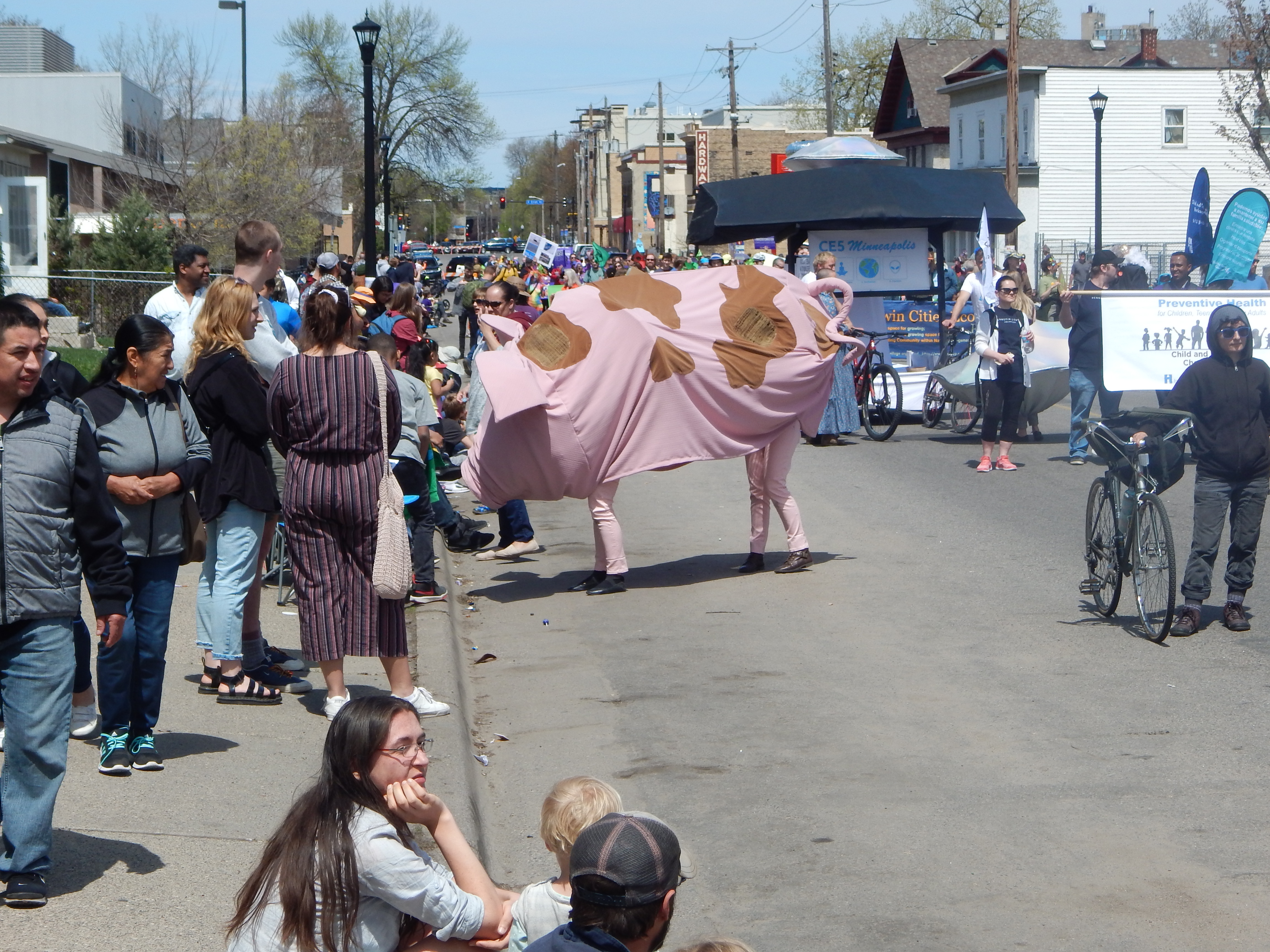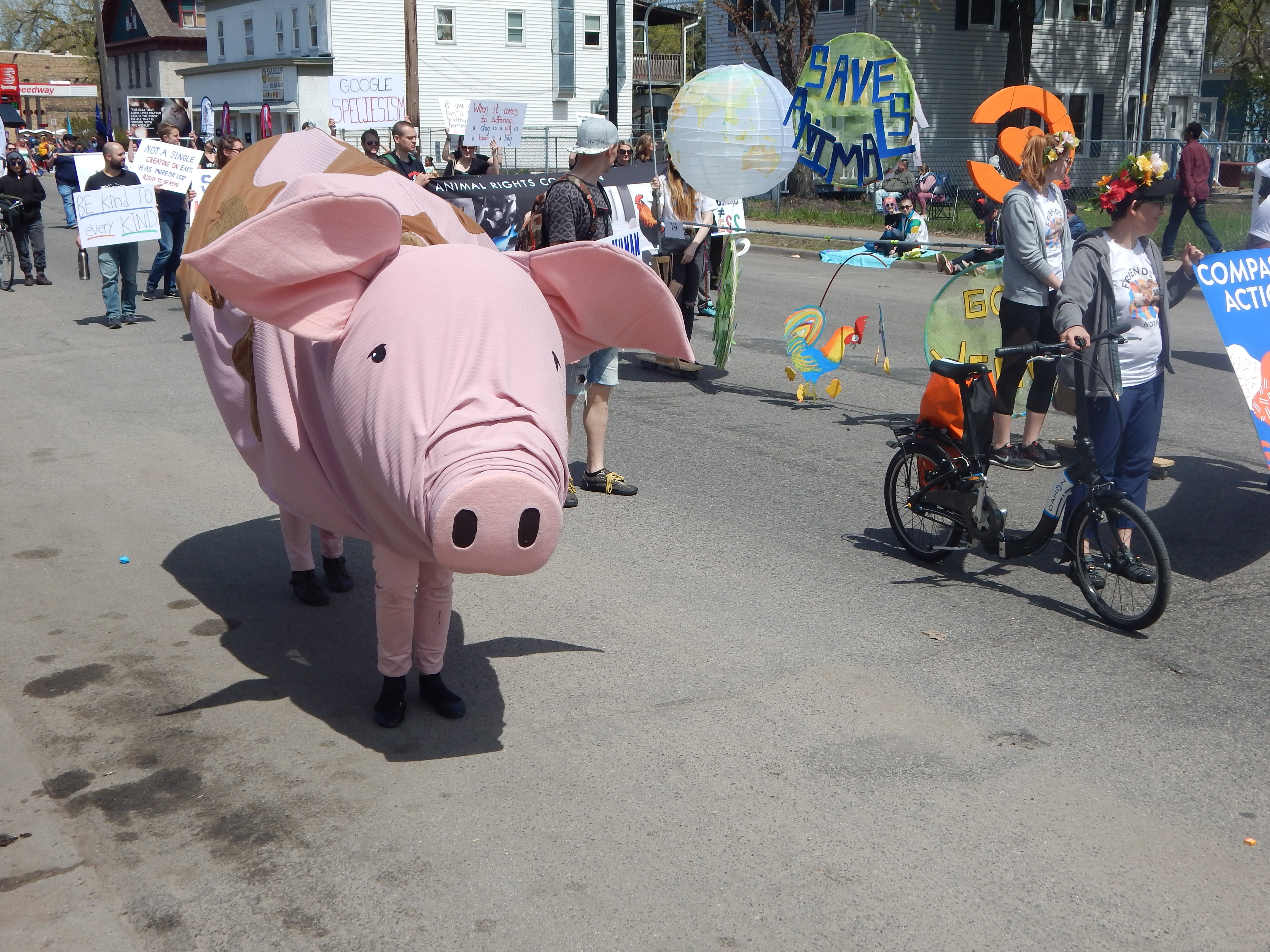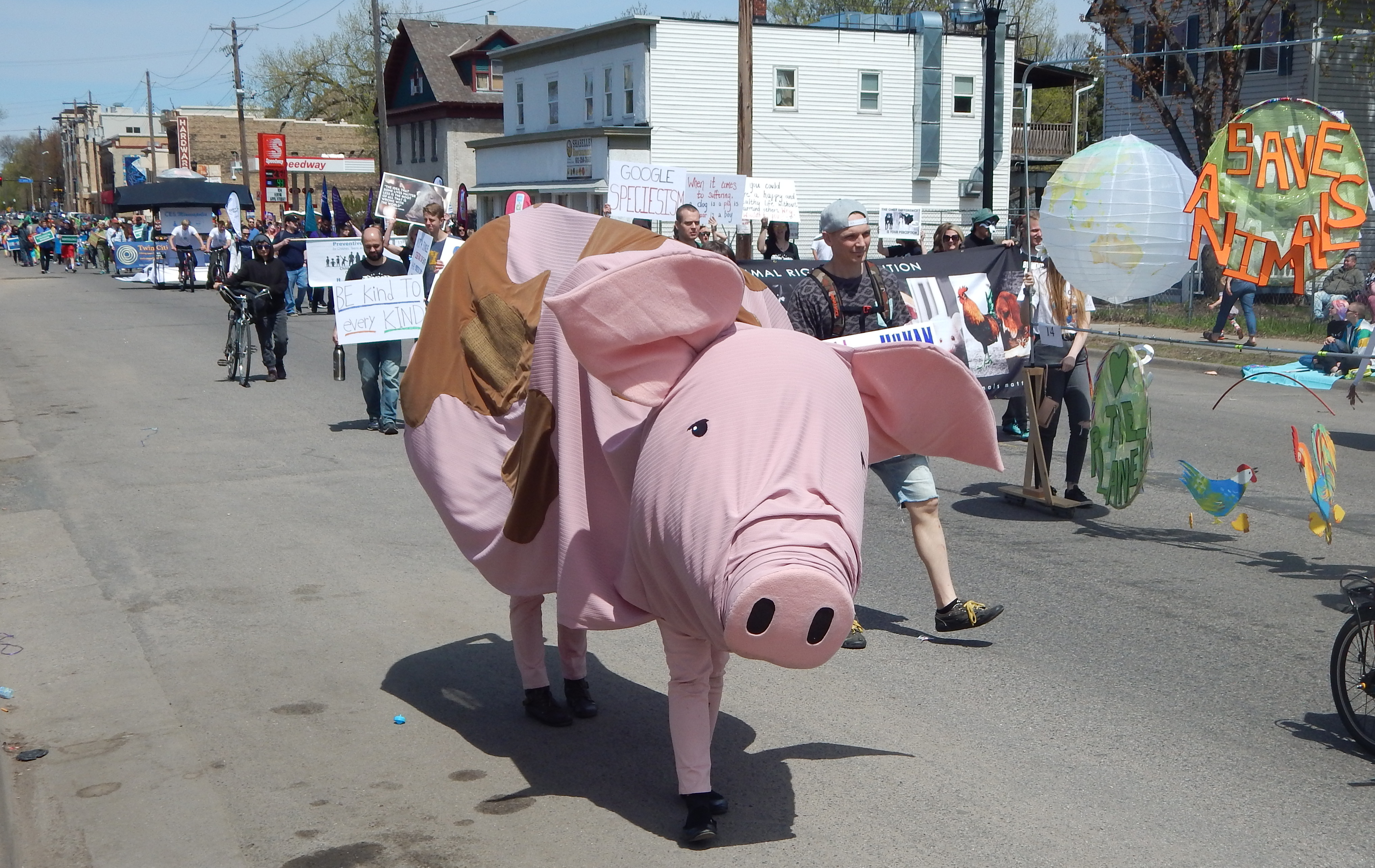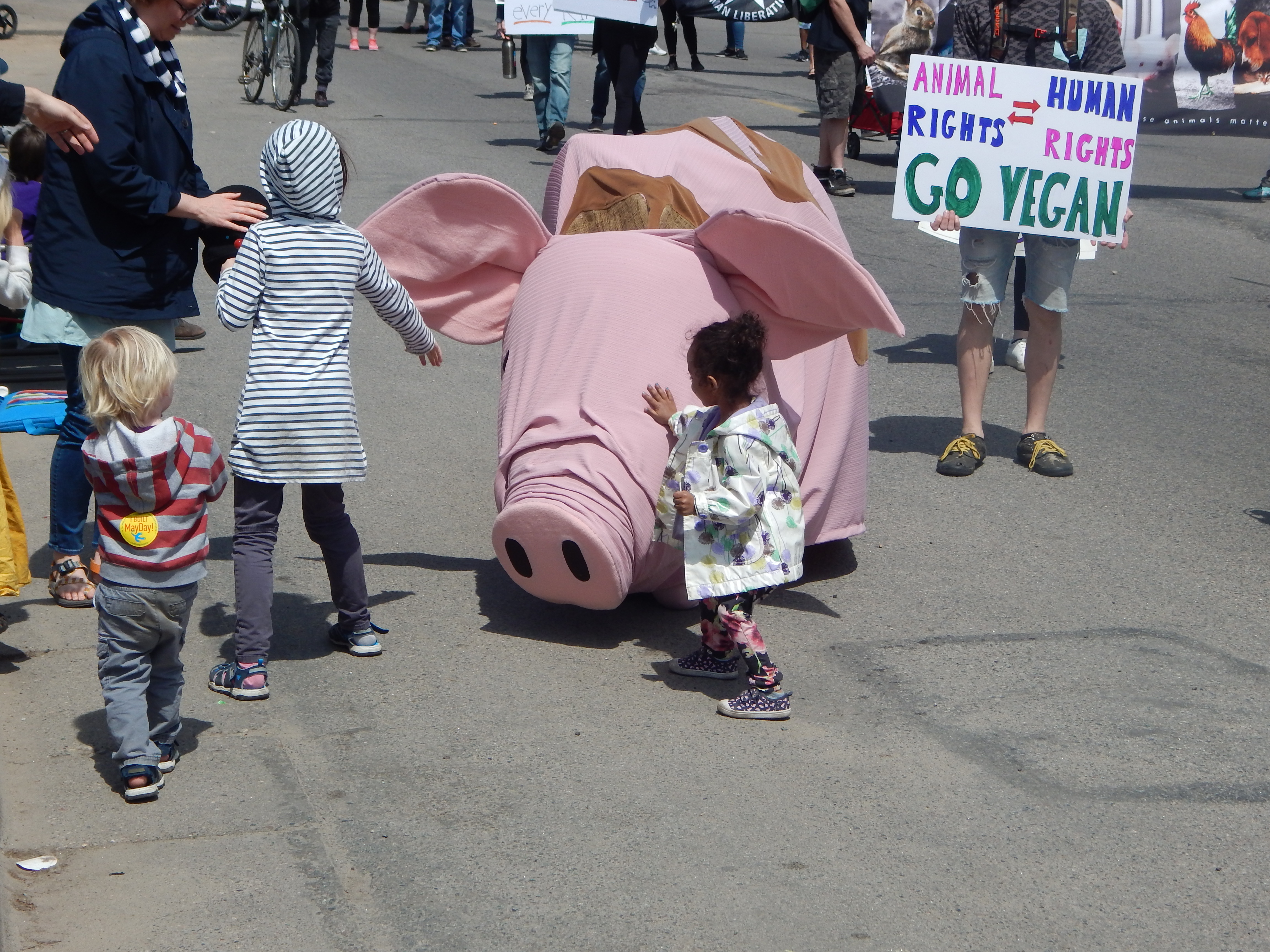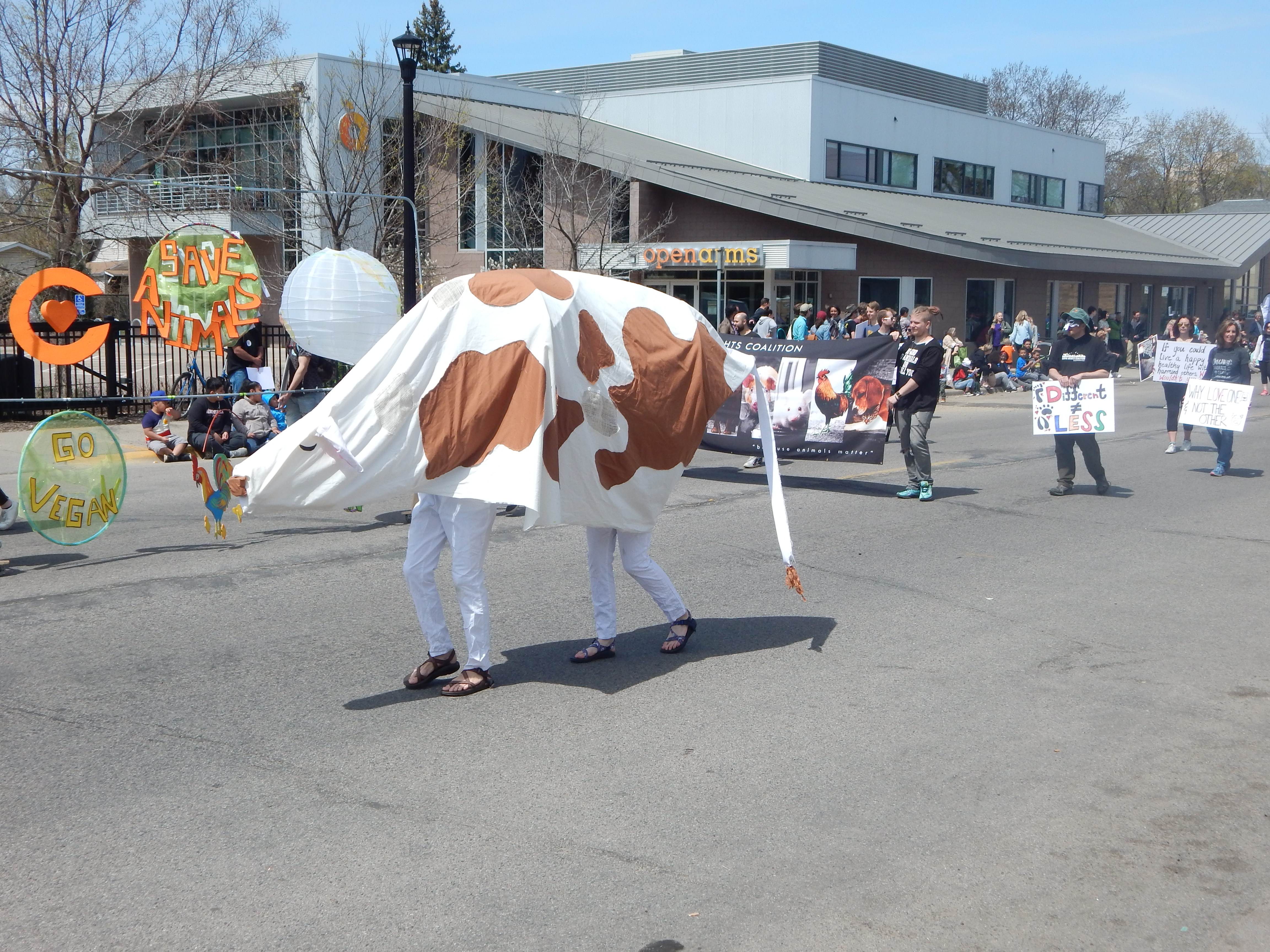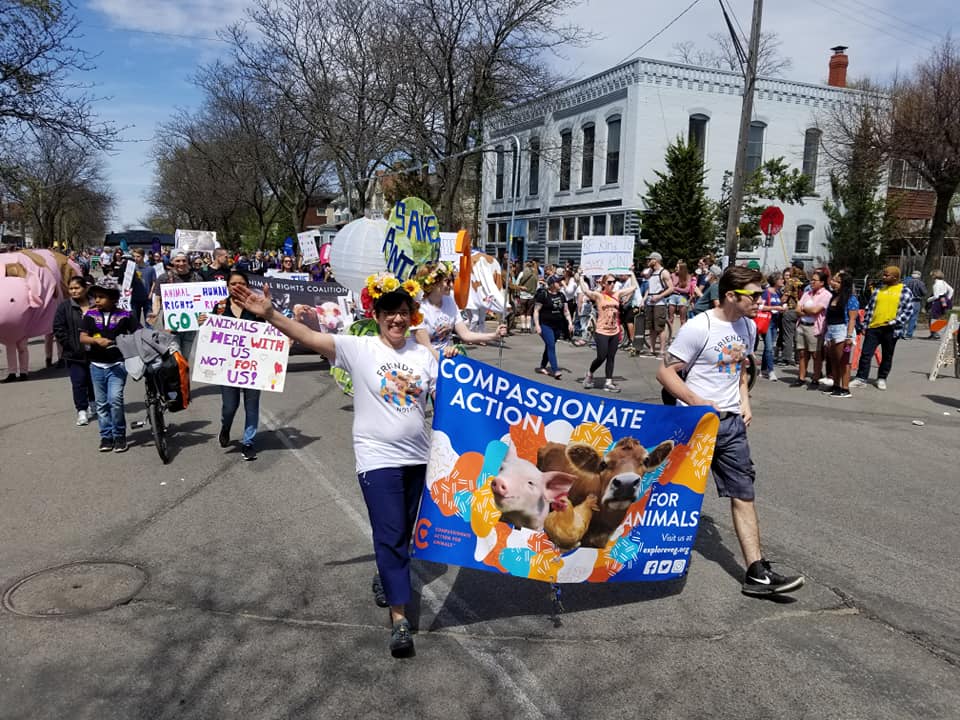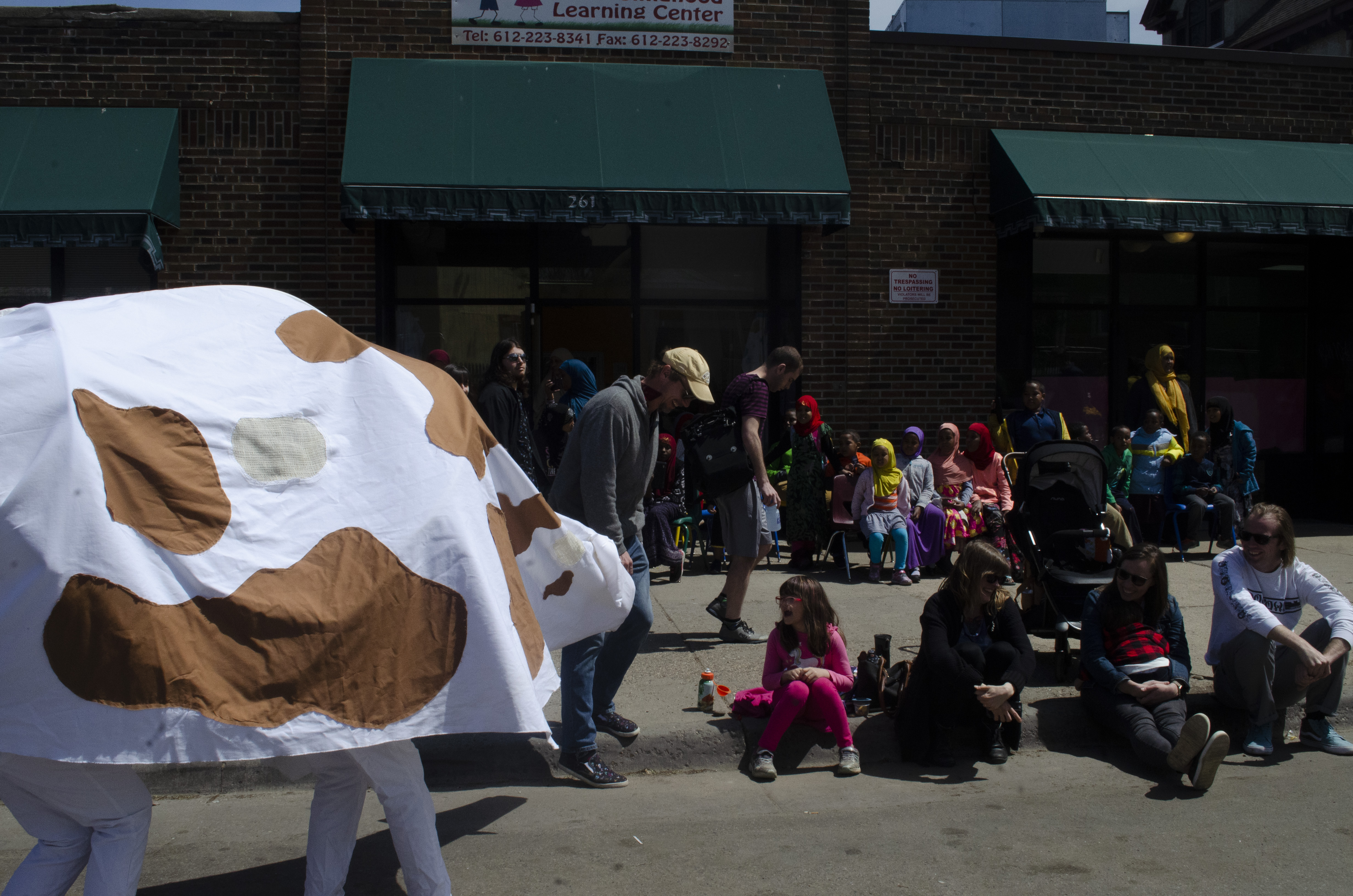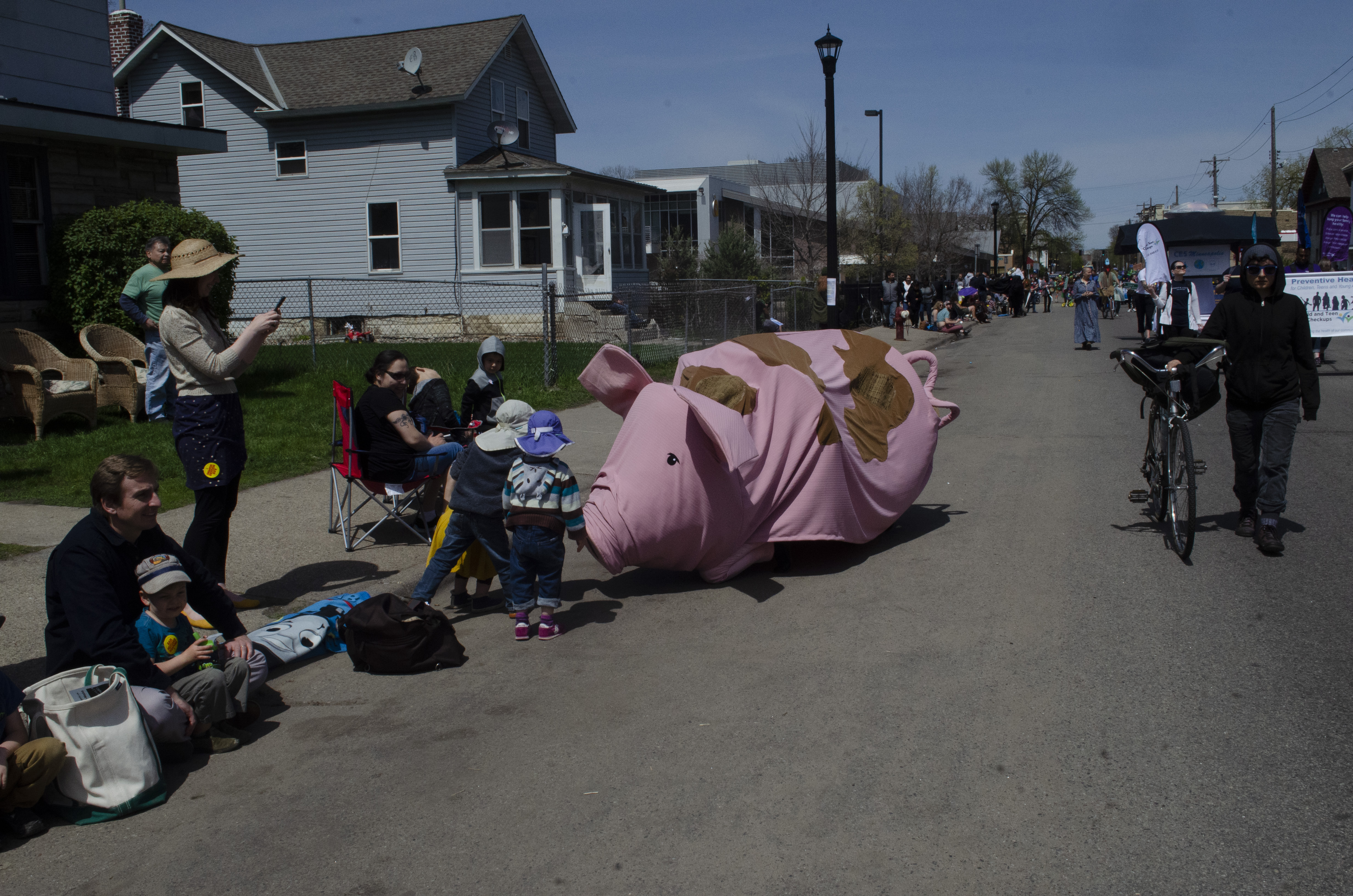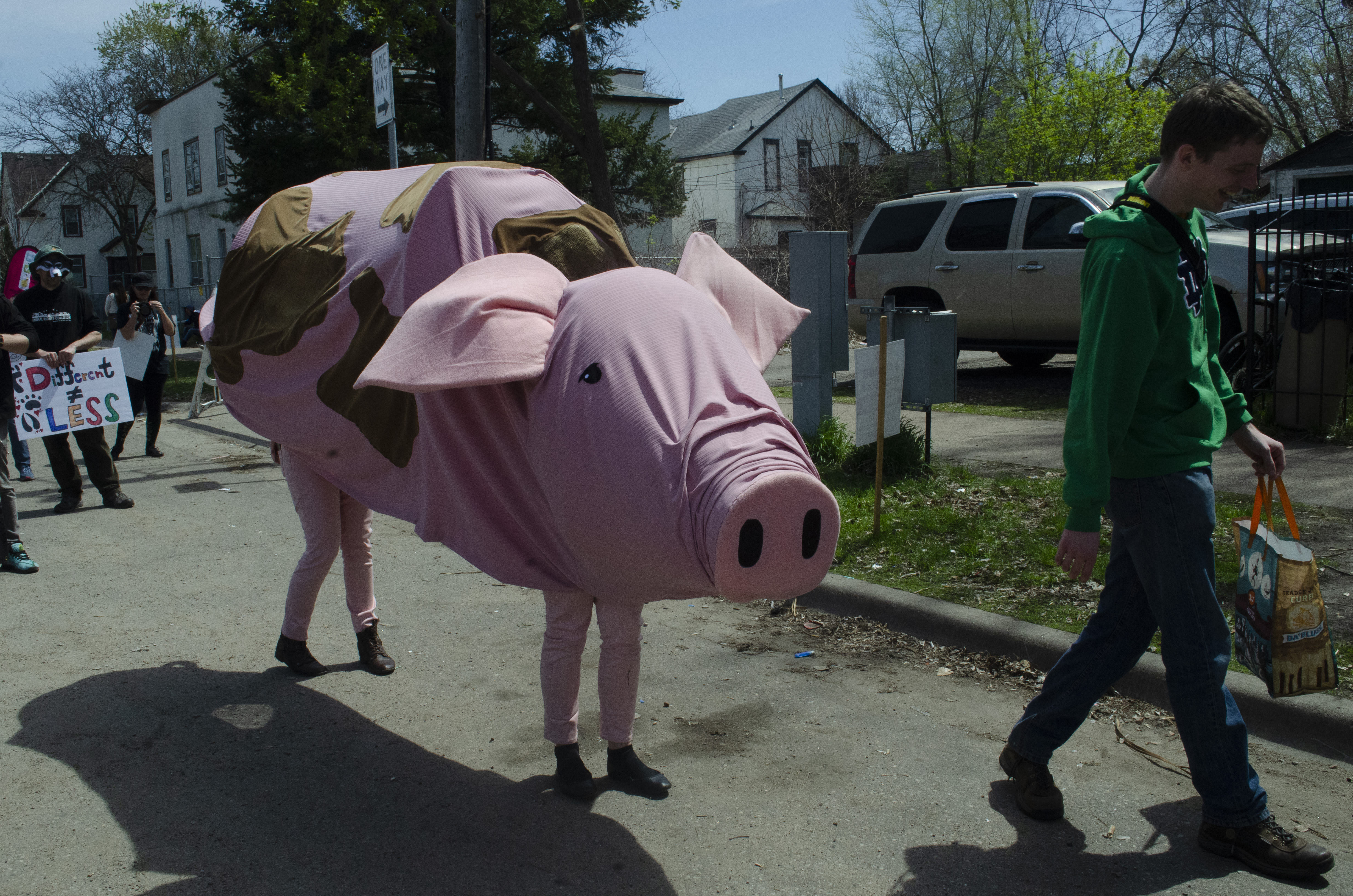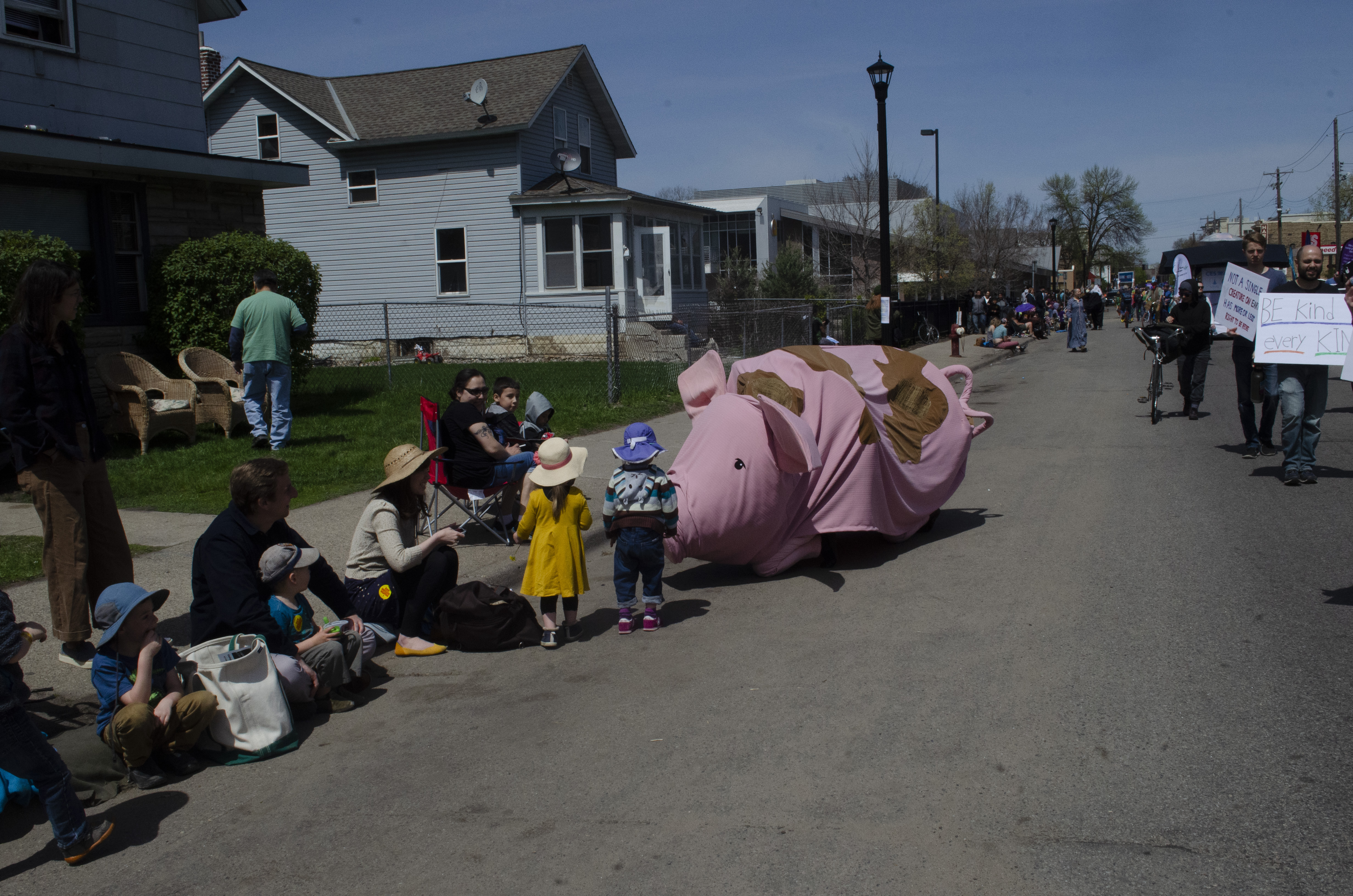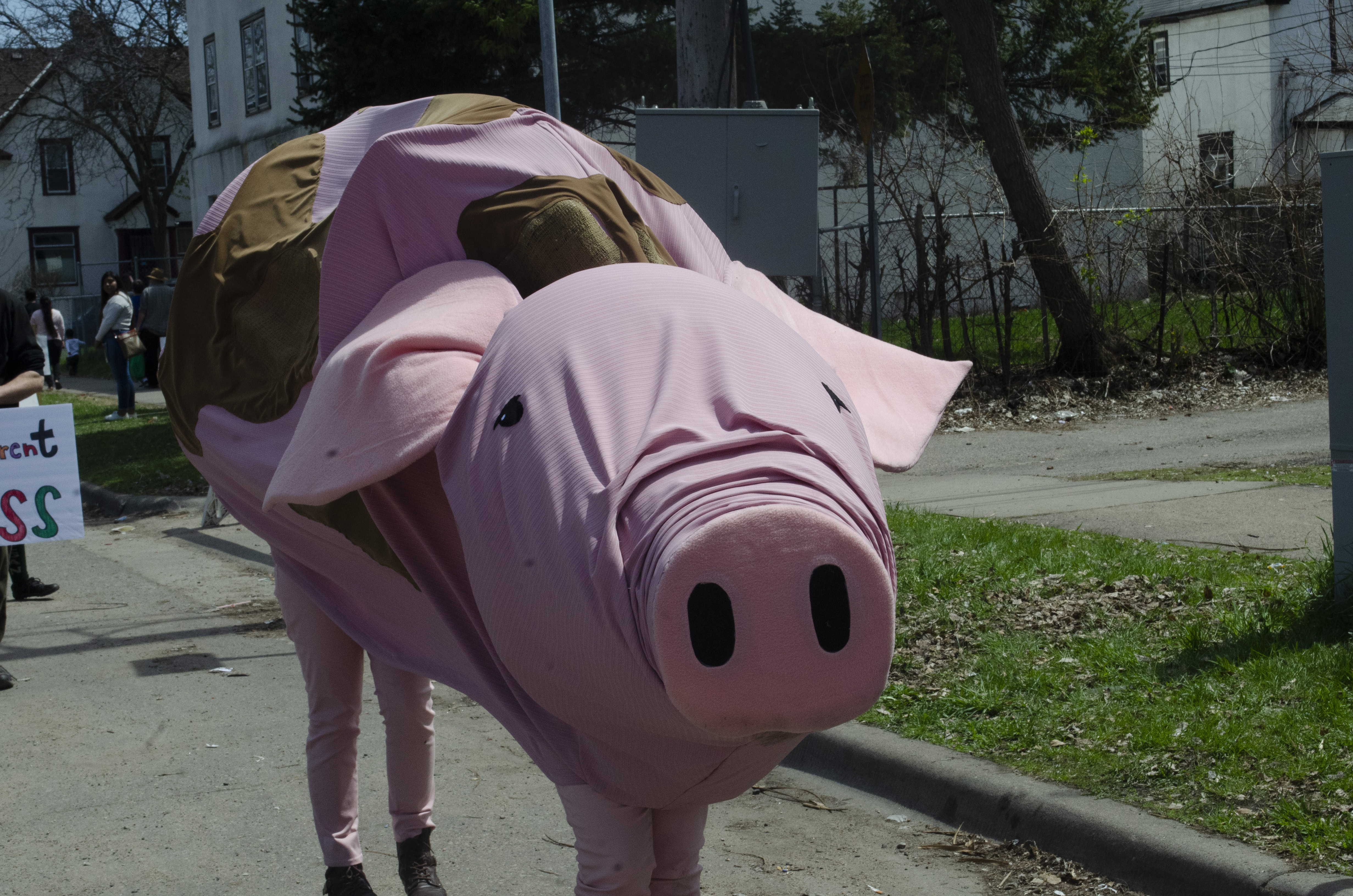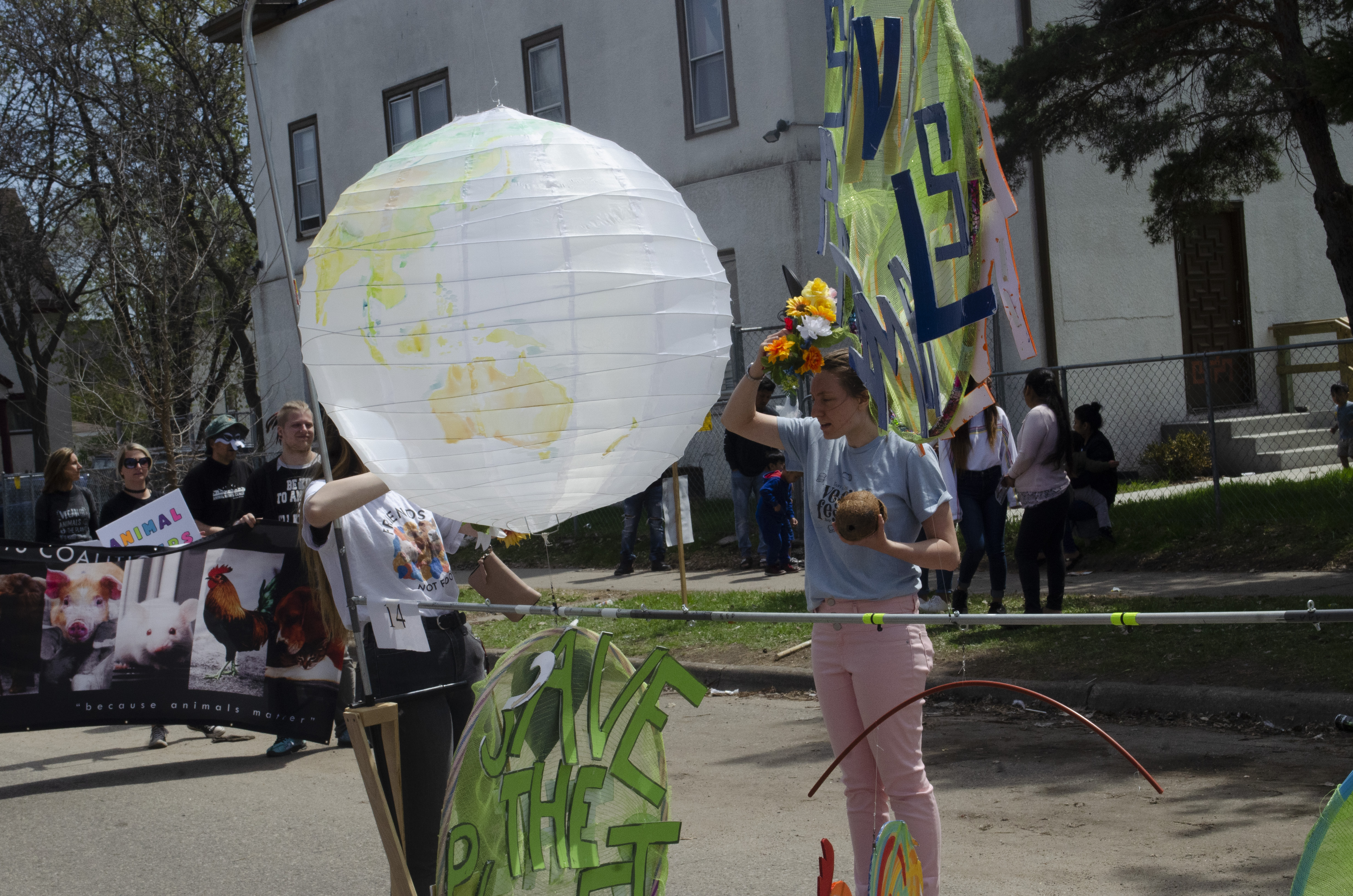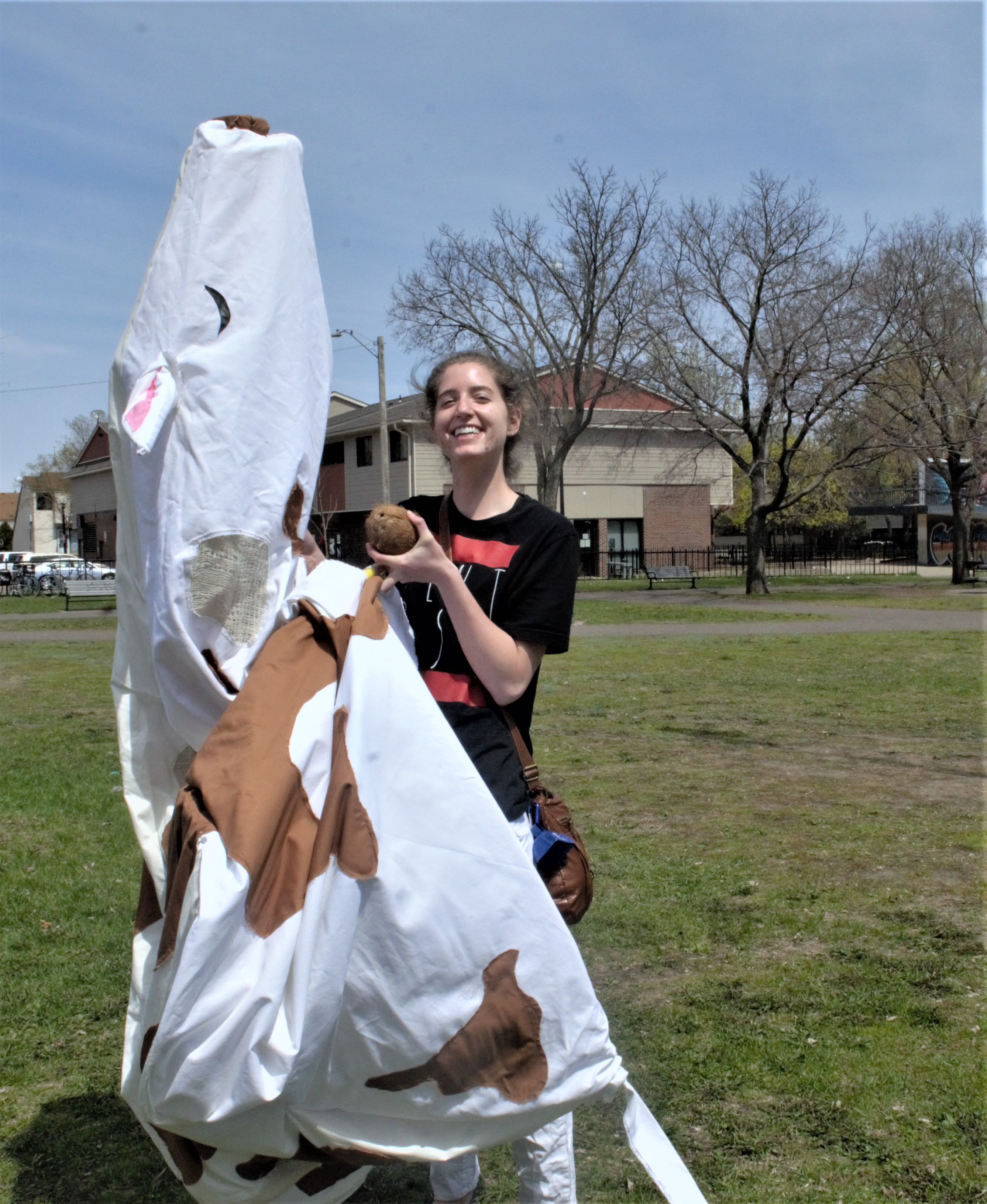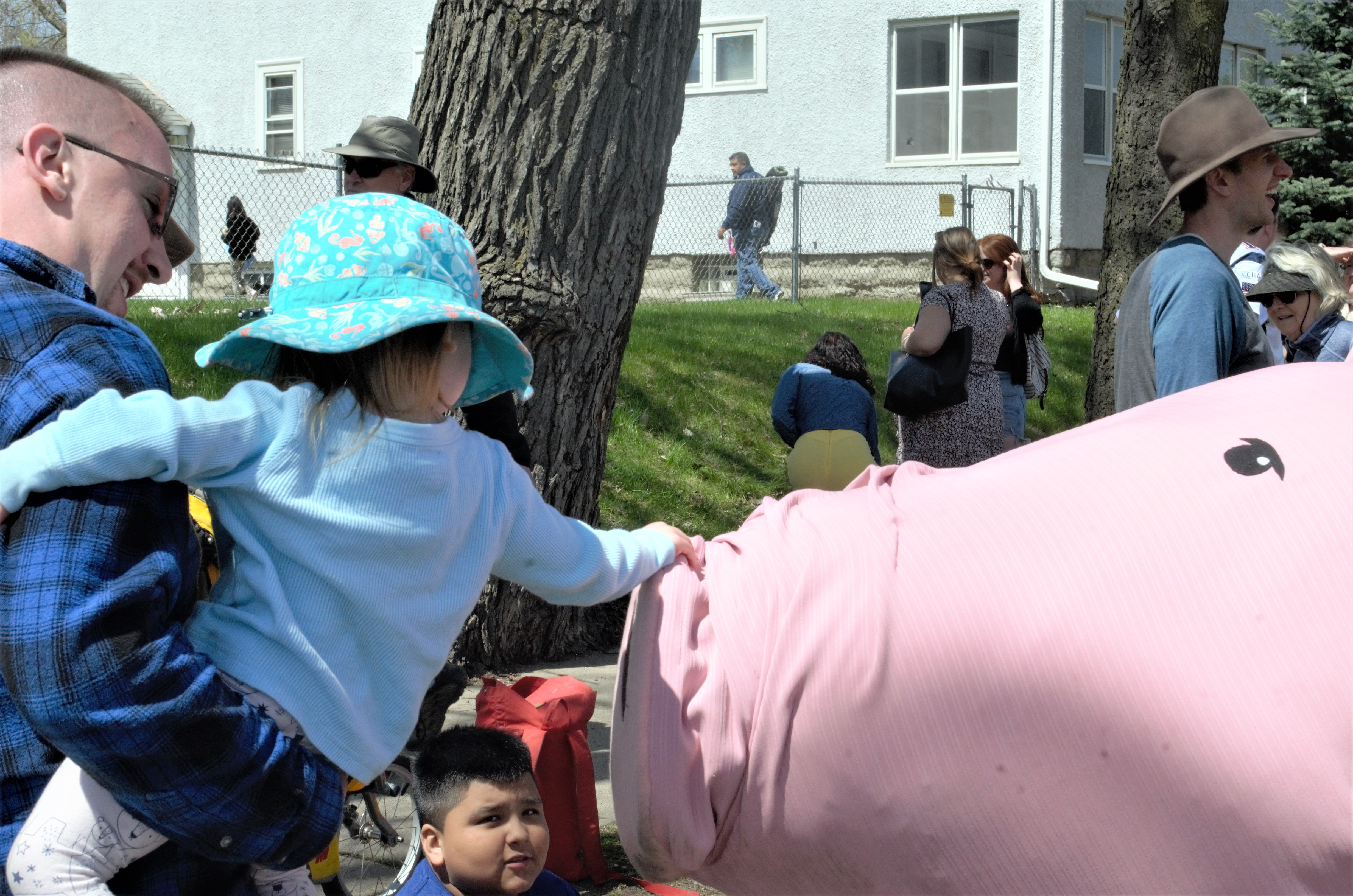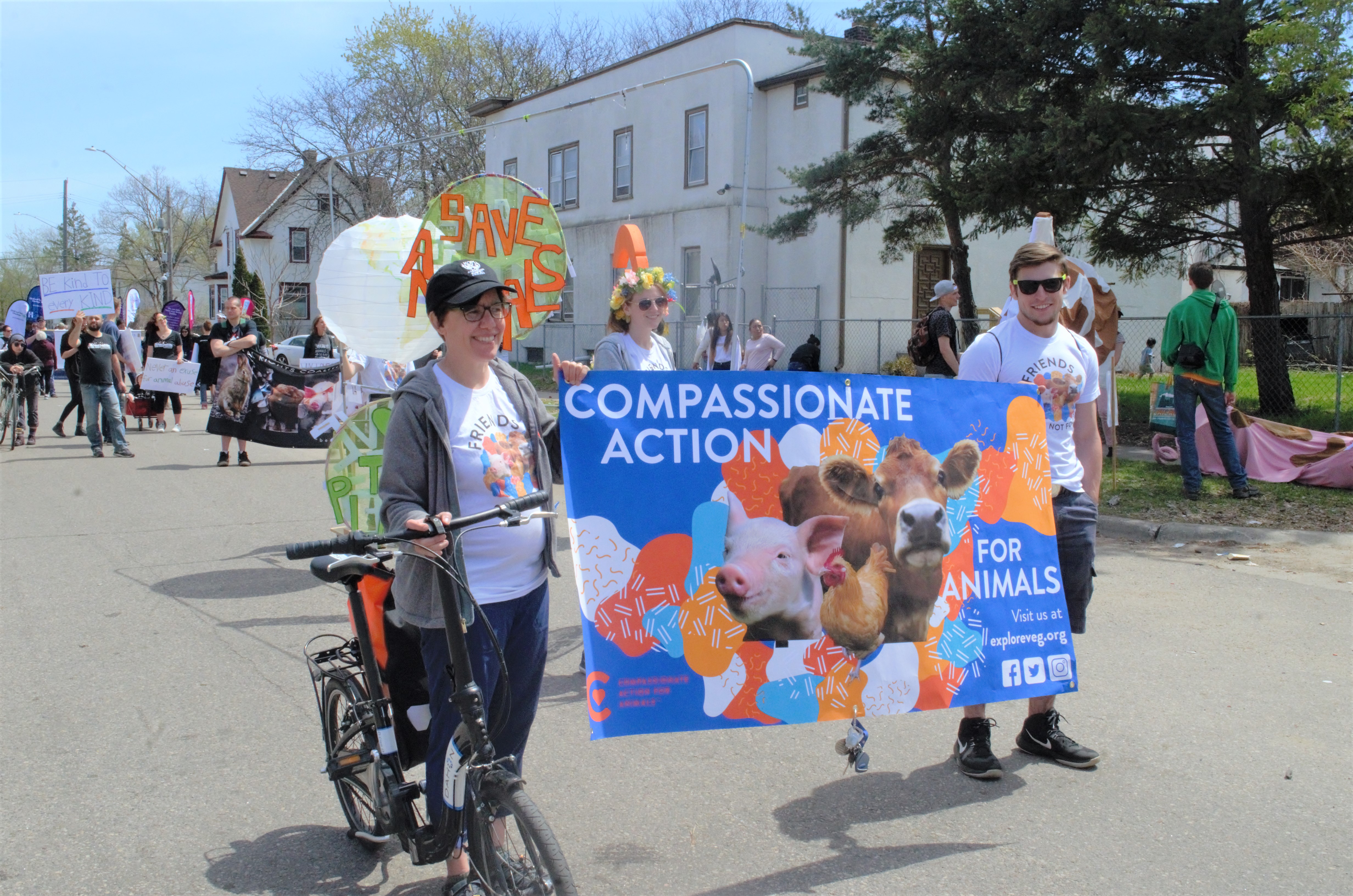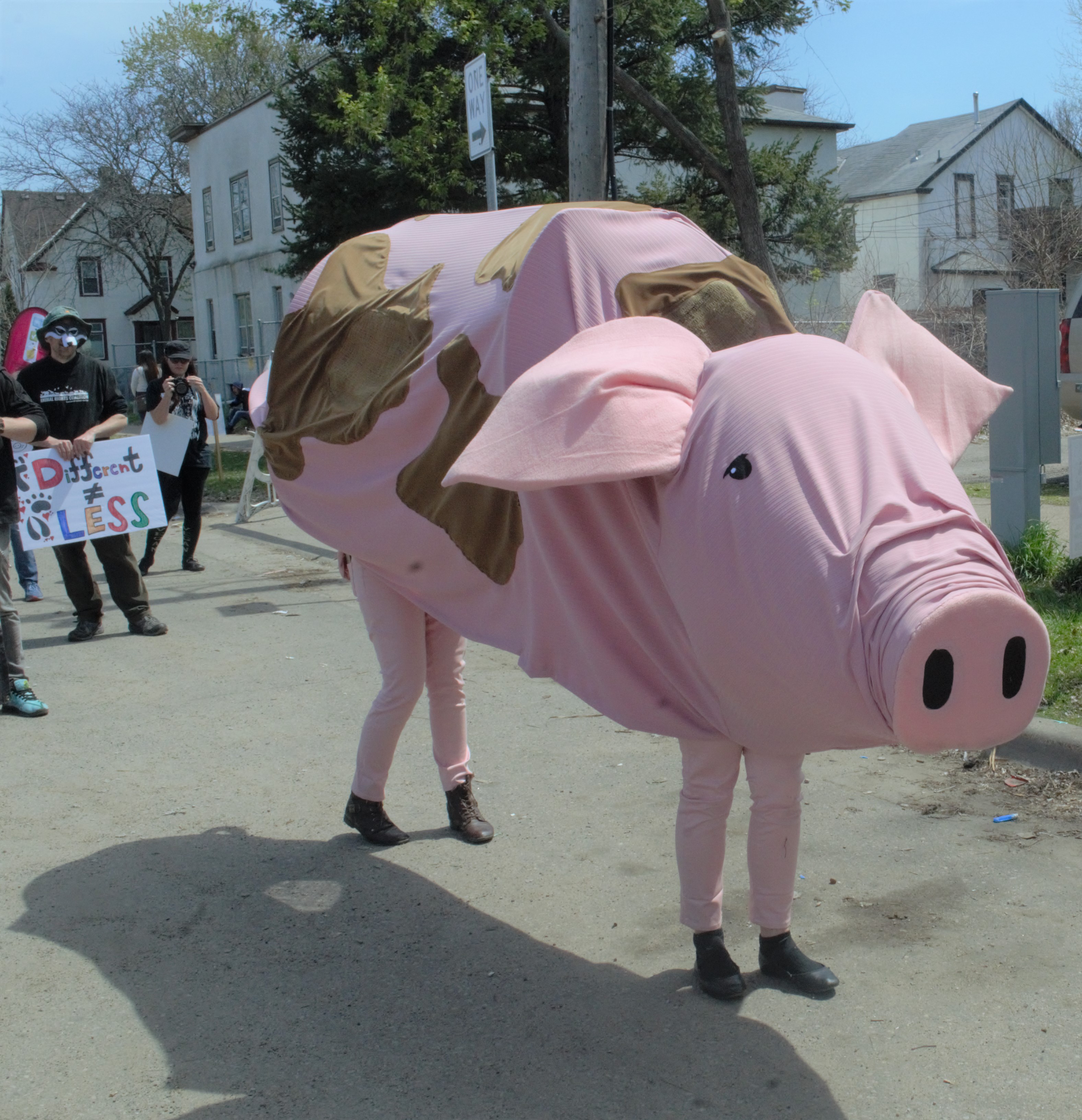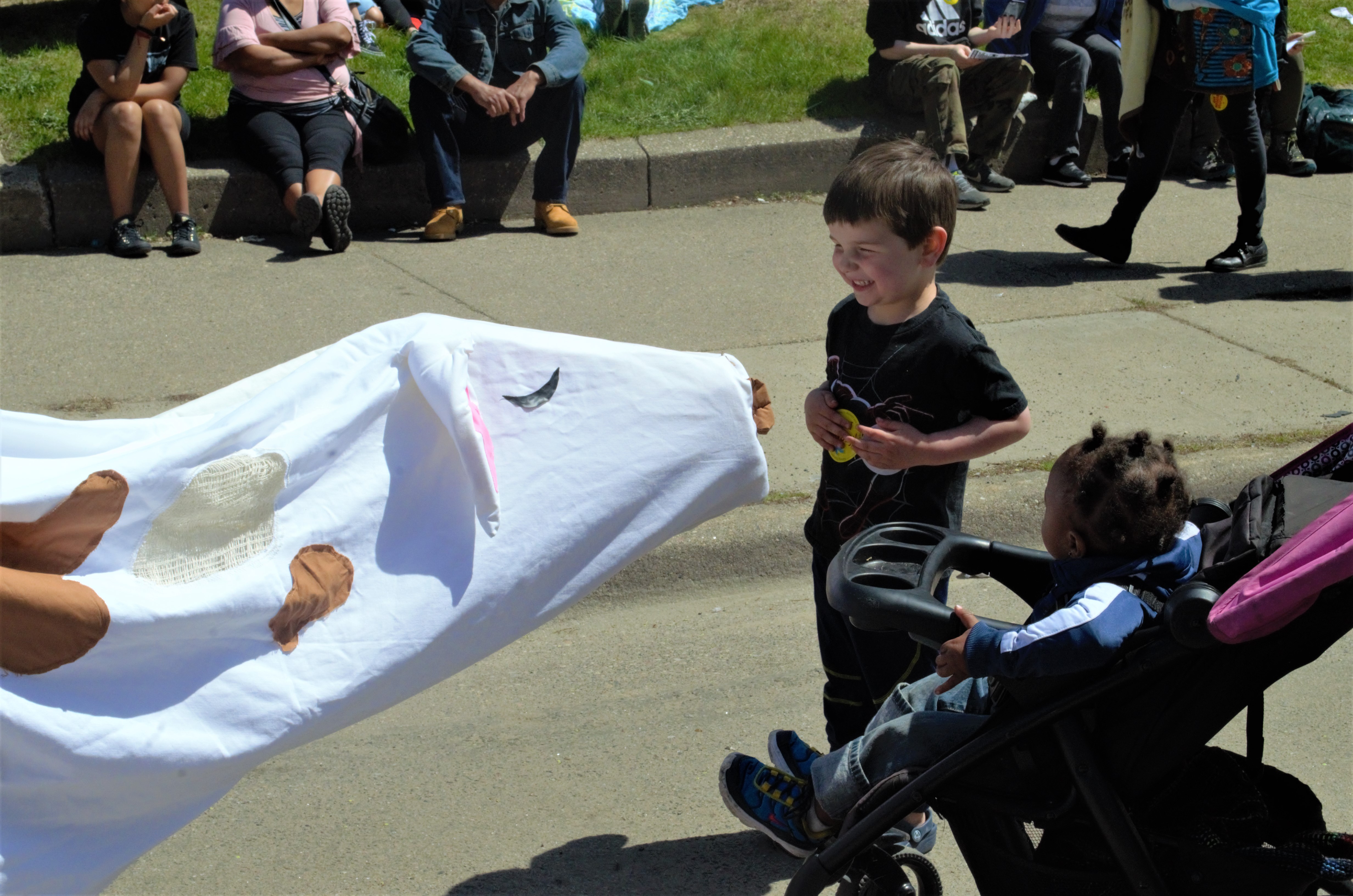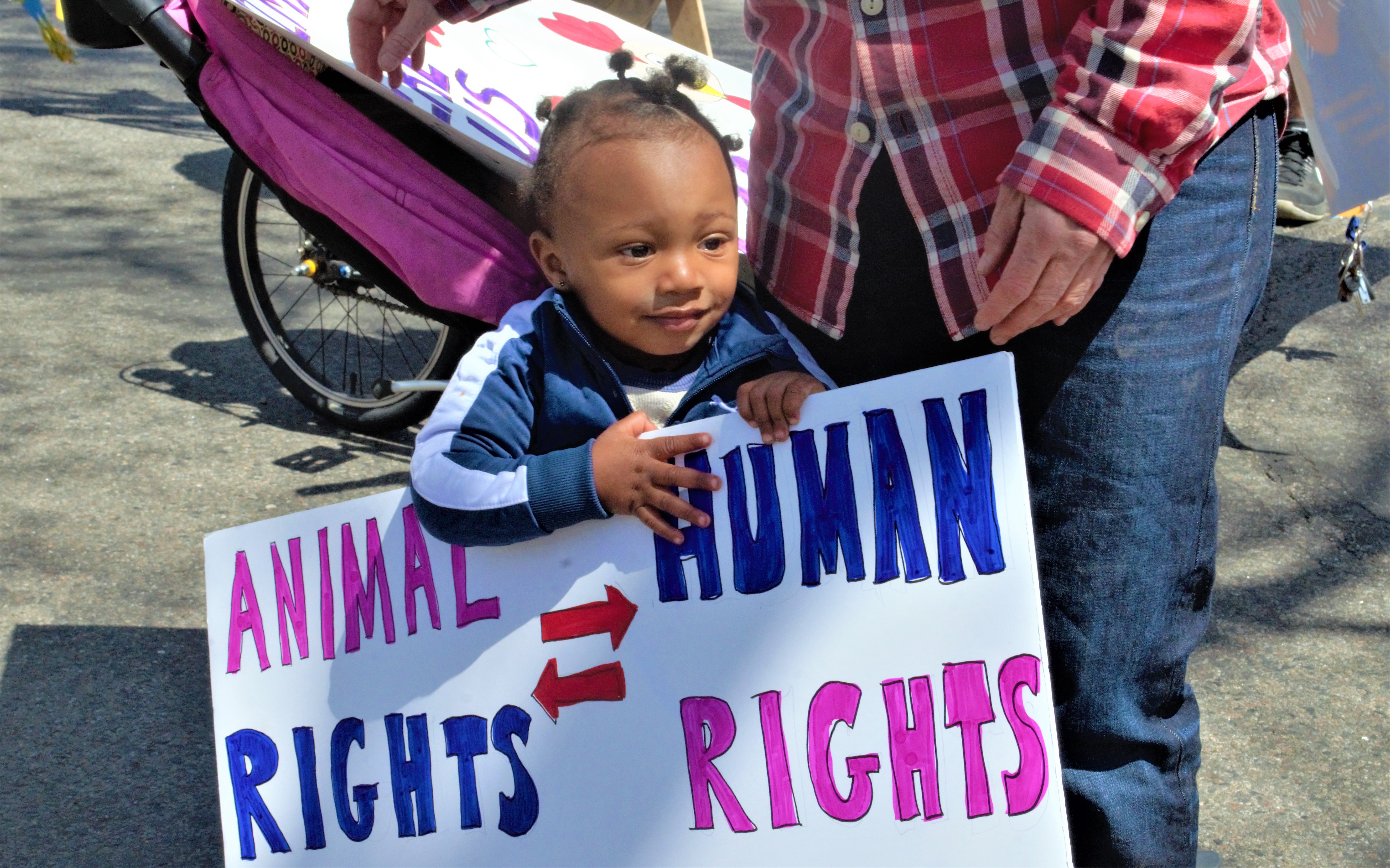You can subscribe to our blog using our RSS feed.
July Brings A Vegan Invasion
The vegans are organizing! If you haven’t heard about the new vegan food festival and drink sampler by now, get ready to be excited—the first Vegan Invasion is this July.
Featuring a growing list of vegan food vendors (including The J. Mobile, Comfort Candy, Crepe & Spoon, Evans Organic Eatery, Hope’s Vegan Kitchen, Keiko’s Kitchen, Radical Eats, Prairie Vegan Pies, Seed Cafe, Spinning Wylde, Vegan East—and of course, Reverie Mobile Kitchen and The Herbivorous Butcher Food Truck), local craft brews, spirits, non-alcoholic options, as well as vegan retailers, this event is sure to leave no craving unsatisfied.
To learn more, we asked the organizers about what inspired their event and what you can look forward to—read on for a sneak peek!

What is Vegan Invasion and what led to its creation?
Organized by The Herbivorous Butcher and Reverie Mobile Kitchen, Vegan Invasion: Food Festival & Drink Sampler is a new annual event celebrating all things vegan. Vegan Invasion will host its inaugural event at Lake Monster Brewing on July 14, 2019.
Just like a beer sampler, festival attendees receive a souvenir glass and are invited to sample unlimited alcoholic and non-alcoholic beverages including beer, wine, cold brew, kombucha, and craft sodas. Food and retail products from plant-based businesses are available at an additional cost. At this festival, everything—all drinks, food, and retail items—is vegan.
Vegan Invasion is inspired by festivals around the country, and we regularly talked about throwing a good party that included alcohol and food. Vegan Invasion is the outcome of those conversations. We piloted the Plant Based Showcase in 2018 and quickly realized there was a strong interest in a vegan event that brings together food and drink. This time, DJ Jake Rudh will spin records on the patio, adding an extra layer to the festive atmosphere.
We want the Twin Cities to have a fun party where we could both showcase and support the growing plant-based food and drink scene in the Twin Cities and beyond. We also want to create an environment where plant-based eaters can come and eat whatever, drink whatever, and shop without having to worry about labels. There is so much creativity, passion, and innovation going on in the Twin Cities right now based around creative food and craft drinks, this just seems like a great time to join the celebration.

Together, The Herbivorous Butcher and Reverie both have a great deal of festival experience. As the first vegan food and drink sampler event in the Twin Cities, were there any other events that influenced the creation of Vegan Invasion?
We’re big fans of craft beer festivals and there are so many great ones around the state; we like the convivial spirit amongst breweries and the way they foster creativity and innovation. We hope our festival will do the same for both the beverage and the food side of things. Twin Cities Veg Fest has been an annual plant-based festival for over seven years and they have been inspirational and supportive to so many of us; it is now the largest plant-based festival in the entire Midwest and a super fun event to attend.
Vegan Street Fair in North Hollywood was instrumental in the logistics behind organizing vendors. There is an art to what they do, and their assistance put us light years ahead of where we would have been otherwise. The Herbivorous Butcher has also been a vendor at EatDrinkVegan and Coachella, both of which provided insight into what is needed to plan an event of this proportion.

Were there any takeaways from the events you’ve been at across the country that you wanted to bring into the event?
We admire the structure of Vegan Street Fair and its dedication to hosting a truly inclusive event. Events can be quite cost prohibitive to both vendors and attendees, so we kept accessibility in mind when selecting pricing structures.
We’ve enjoyed drooling over wild food creations and have encouraged our prepared food vendors to think outside the box and come up with some Instagram-worthy dishes. Festivals such as ours are the perfect time to try new things and attract both new and returning customers.

Is there anything you want Vegan Invasion attendees to leave with?
We hope that everyone who attends has fun, meets new people, and is introduced to new businesses. Our ultimate goal is to enhance community.
How can folks get their ticket?
Head to veganinvasionmn.com for ticket information.
General admission is $25 through July 13 and $30 the day of the event. We also have a VIP option, as well as ticket options for designated drivers and attendees who are underage.
Is there anything else you’d like people to know about Vegan Invasion?
This festival is for everyone, and we want everyone to feel welcome regardless of their current food preferences. We have so many great breweries, some of them from out of town, non-alcoholic options, and there will be amazing and creative food that will make this an unforgettable experience.
Hark Cafe—Serving Up Gluten-Free, Vegan Decadence in Uptown

Meet Lisa and Katherine, the owners and creatives behind Hark, a 100% vegan, gluten-free, celiac-safe bakery based in Uptown.
The idea for Hark came to the duo when they were in school together over six years ago. They would often create different veganized dishes and baked goods to share with friends. “We were talking about what we wanted to do after we left and the idea was that we would someday have a vegan cafe,” recalls Lisa.
After graduating, both moved to New York—Lisa managed a vegan restaurant and Katherine shortly moved to Minneapolis to work at the Guthrie as a theater artist. During this time, the two didn’t forget about their idea.
“A series of events happened where it was going to be possible for Lisa to move here and we thought, ‘Oh, we could actually do that. It doesn’t have to be a crazy dream where people are talking to you all the time like, It would be so great if you guys opened a place where we could eat your food all the time,’” says Katherine with a smile, “And then she moved here in November and here we are.”

So far, the two have been making their gluten-free, vegan sweets and savories—including bagels, donuts, cinnamon rolls, and king cakes—for private events (including a house show), pre-orders, and pop-ups and plan to have more items available for pre-order soon, including cheese.
“I ferment vegan cheese, like brie, blue cheese, and goat cheese, and in order to sell that we have to have other licenses that we don’t have yet. So that’s next,” says Katherine. “I have a little fermentation fridge in my house—I bought a wine fridge because you can temperature control them so that it’s stable and safe to eat and right now I have four wheels of brie in there that are a mixture of macadamia and cashew and then I have five or six blue cheeses in there—it’s cool, it smells great.”
Worth noting, Hark in its original ideation wasn’t going to be gluten-free—the duo added that as an element after Katherine found out she has Celiac Disease a little over a year and a half ago. “It severely limits the amount of things you can eat. It’s not just like, ‘I’m gluten-free but I can still eat out.’ In fact, I can’t eat gluten-free things at places because cross-contamination is deathly dangerous,” explains Katherine. “So a lot of it was me going, ‘Ah, I wish I could eat my favorite pies and cinnamon rolls and donuts again.’”

Bagels were one of the things the duo started with. “Most gluten-free baked goods have eggs in them,” explains Katherine, “because without gluten or something to hold it together, most manufacturers use eggs.”
The two have worked quickly to make many of their vegan favorites gluten-free while paying special attention to taste and even diving into research into the chemical structure of different ingredients to create the most balanced blend of flours for their gluten-free flour blend and their cheeses. Everything else is made from scratch too, including the soymilk, vegan butter, and mayonnaise they use in their recipes, and they put each recipe through a number of tests before they deem it ready to share.
Neither studied chemistry in school—they’re just passionate about their food. “It’s a good thing that we’re nerds,” says Lisa with a laugh.
After their experiences living in New York, the two hope to bring vegan bagels to Minnesota. Katherine starts, “To be able to just go out and get a tub of cream cheese and some lox and bagels and bring it back to your apartment for brunch—” “—is so a thing in New York,” finishes Lisa.
The two are in the process of looking for a brick and mortar that serves as a neighborhood hang out spot for vegans and non-vegans alike and carries ready-made items like blue cheese dressing (or blue cheese cheesecake!) as well as bagels and cream cheese and other plates to enjoy in-house or out. “We both have the sneaky approach to veganism with folks—we like to give them a friendly introduction to incorporating vegan food in their life,” says Katherine.

Lisa adds, “The place that I worked at for a long time in New York was a vegan fast food place and it was the same idea but from a different angle—how do we make something accessible and approachable for people who aren’t vegan but are kind of curious about plant-based or just want to try something different. I think that’s the goal.”
“Yeah, in addition to vegans being able to enjoy food they really didn’t think they would be able to have again,” says Katherine. “We did a first taste of the blue cheese I’ve been making the other night and I never thought I would get to eat that flavor again. It’s creamy, smelly, so blue cheesy.”
Can’t wait to try something from Hark? Right now, you can order cinnamon rolls, bagels, and donuts. Email harkcafempls@gmail.com to place your order and follow them on Facebook for updates.
MayDay 2019 Photos
Did you get to see our awesome puppets that got folks interacting with farmed animals at the MayDay parade this year?
Whether you were there or not, you’ll enjoy this photo slideshow!
CAA volunteers and members of our University of Minnesota group participated in the march alongside the Animal Rights Coalition.
This year’s display featured a new CAA banner as well as a new walking pig puppet to accompany the walking cow puppet, both brought to life by Marina and Liberty Kirkeide.
The interactive and fun nature of our presence got folks engaged with animals issues and encouraged them to take the next step towards a vegan diet.
Many thanks to Liberty Kirkheide and Maya Ulrich for taking photos!
Workplace Giving: Matches and Campaigns

Want to make a difference for farmed animals at your work? Here are two possible ways to give to Compassionate Action for Animals through your employer.
If you choose either, please let us know. We want to thank you for making our work for the animals possible!
Employer matches: double your gift!
Did you know that many employers will match a gift you make to Compassionate Action for Animals?
To find out if this is a benefit offered by your employer, contact your Human Resources department. If you work for a large company, you can also check this list.
If your employer does provide a match, you’ll need to fill out a form with information about the total amount of your gift and contact information for Compassionate Action for Animals.
See the information you may need in the “information you may need” section below to get the details.
Workplace giving campaigns
Many workplaces conduct employee giving campaigns. This is when employees designate part of their paycheck to go to charity.
It’s important to know you can give to Compassionate Action for Animals through the United Way!
On the United Way giving form, there will be a space where you can specify a nonprofit. Write in Compassionate Action for Animals.
Information you may need
Compassionate Action for Animals
2100 1st Ave. S, Suite 200
Minneapolis, MN 55404
(612) 276-2242
donations@exploreveg.org
Federal Employer Identification Number: 41-1846192
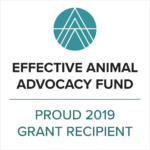
Creating an Inclusive and Equitable Animal Advocacy Movement

Written by Julie Knopp
How do we create an inclusive and equitable animal advocacy movement that allows people of all genders to give their all for the animals? How do we skillfully respond to allegations of sexual violence from activists against other activists, and prevent more of these incidents from happening? How do we ensure that women are just as represented in leadership roles as they are among all advocates? How do we make our movement more inclusive and welcoming to trans people?
CAA supporters Unny Nambudiripad, Amy Yule, Matt Schroeder, and I (Julie Knopp) have been thinking a lot about these questions. We want to create an inclusive community of animal advocates where people of all genders feel welcome and have equal access to leadership opportunities.
To start a conversation around these important issues, we’re working together to put on a free, day-long workshop called Equality Squared: Gender Equity in the Animal Advocacy Community. The goal of this workshop is to build skills to resist interpersonal and institutional sexism. Free lunch will be provided. All genders are part of the solution, so we encourage all to attend. You can register to attend here.
This event will begin with a brief introduction to gender issues in the animal advocacy community. We will spend the rest of the morning training ourselves as bystanders through role play and collaborative problem solving facilitated by the Aurora Center. After lunch, Raechel Tiffe will lead participants to develop community action plans. Groups will have the opportunity to create a specific gender equity solution and a plan for implementation. We will conclude with data-driven take-home recommendations to promote more equitable operations in our respective institutions. Unny Nambudiripad (CAA co-founder and former Executive Director) and Julie Knopp (CAA Board Member and Wholesome Minnesota Program Coordinator) will MC the event. Each participant will leave with the skills to create a more inclusive community of animal advocates.
This event is the first step towards a broader ongoing conversation and effort towards equity in our animal advocacy community. The event planners acknowledge that the event will be limited by time and will have to leave many elements of this issue unexplored. We do not consider ourselves experts on the issues; our hope is to facilitate a dialogue that will help foster growth and learning for all, including ourselves.
To learn more, register, or donate, visit the Equality Squared website. Information is also available on the Facebook event page. Click here to fill out the registration form for this event.
Volunteer Story: Take the Leap With Me

An interview with Yunuén Ávila, CAA Volunteer and Explore Veg Mentor Program Coordinator
What drew you personally to veganism?
I started choosing to be vegetarian (without really knowing that that was even “a thing”) when I was a baby. My mom said that I would spit out meat or feed it to my pets. I would also cry when I was forced to eat meat. As a young teen, I made my mom a promise, “When I turn 18, I’m becoming a real vegetarian and you can’t stop me.” My mom was offended and worried at the time, since the Hispanic/Latino culture relies heavily on meat consumption—you’re either “poor” or something is wrong with you if you chose to abstain from it.
I was a proud Lacto-Ovo vegetarian until I stumbled on the dark side of YouTube: videos of animal cruelty, animal testing, the dairy industry, and more. I remember I was sobbing in pain, feeling anger at the abusers, and feeling anger at my own hypocrisy.
“How is it that I say that I “love” animals, but I pay these monsters to torture and kill these living and sentient beings?!”
I remember setting my laptop on the kitchen floor and in rage, I went into my kitchen cupboards and threw everything out on the floor. I did the same in the bathroom. I sobbed on the floor as I read the labels on the canned goods and toiletries to see if they had any animal ingredients or if they’d been tested on animals. That day in May, seven years ago, was my true “AHA” moment. I had become a vegan for the animals.
Seven years ago, veganism wasn’t as popular as it is now and I relied heavily on social media pages that encouraged the vegan lifestyle. Although I had found myself, I still didn’t feel like I “belonged” anywhere. I was an outcast to the “meat-eaters” and an outcast to the judgmental vegan community I had found on social media. I struggled with veganism for a while until I stumbled across Compassionate Action for Animals (CAA). They received me with open arms and with them, I felt I had found my home and community. THIS is what veganism is all about: it’s about COMPASSION—compassion towards our animal friends and towards ALL people, no matter what stage in their veg-journey they’re on. I began being active with CAA and volunteering as much as I could. They offered veg-activism training and I wasn’t hesitant to attend. I’ve been volunteering at CAA for four years now and the only thing I regret is not being a vegan and a CAA volunteer sooner.
All in all, it’s never too late to have that “aha” moment. If you’re reading this, this might be the time to spark that change in your life and be the one whom our animal friends thank for letting them live their lives to the fullest.
How do you explain your vegan lifestyle to folks if and when they ask about it?
Veganism is not only about avoiding the consumption of animals or abstaining from wearing anything that derived from animals or that has been tested on animals. It’s a moral and mental awakening of the horrific suffering these living and sentient beings have to endure on their short-“lived” lives. It’s about making a conscious decision to not participate in the abuse. It’s also about perspective. If one frowns upon the other side of the world for consuming who we view as pets in this country, then why is it okay to consume farmed animals? If I stopped drinking my mother’s breast milk at a young age, then why is it viewed as normal to consume milk at an adult age, especially milk that doesn’t belong to us in the first place? Supply and demand. The more one demands plant-based food, the less suffering there will be. Take the leap with me.
What is your favorite dish to share with veg and non-veg folks?
My husband’s, Sanchez Brown, “famous” authentic, vegan tacos and my “famous” vegan spinach and cheeze lasagne. (P.S. If you want to try Sanchez’s tacos, they’re exclusive to CAA volunteer appreciation events. Sign up to volunteer today!)
Besides volunteering with CAA, what are you up to these days?
I advocate for workers (union activism) and for the voiceless. In my spare time, my husband and I like to throw parties, make tons of vegan dishes to share, and then show them off to our non-veg friends to try so they can get a taste of the beauty of veganism.
––––––––––––––––––––––––––––––––––––––––––––––––––––––––––––––––––––––––
Looking to make a change in your life? You can find free veg resources on our website and sign up for the Explore Veg Mentor Program. To get involved with CAA, visit our volunteers page to let us know what you’re interested in getting involved with. All are welcome!
Feeding School-Aged Vegans – Growing Up Vegan Part 3

Written by Suzy Sorensen, RD, LD, CDE
School-aged children are gradually gaining independence and exploring their place in the world around them. It’s never too early to talk about why we choose a vegan lifestyle: compassion for others, keeping our bodies healthy, and taking care of the planet are family values for many!
It’s a great time to dig into veg-friendly books and movies and maybe even visit a local farm sanctuary to engage young children! There are lots of great offerings available. An online search brings back hundreds of ideas.
A balanced vegan meal plan can meet children’s nutrition needs while offering health benefits. Research shows that vegan children eat more fruits, vegetables, and fiber than their peers and eat less fat and cholesterol. They tend to have healthy body weights and may have reduced risk for chronic disease later in life.
All children need enough calories to support growth, and even more with extra physical activity! Children might need to add in snacks between meals or around extra activity.
To add a nutritious calorie boost at snack time, try:
- “Trail mix” with nuts or seeds and dried fruit
- Crackers or an apple with nut butter
- Guacamole on corn chips or on a small tortilla
- Veggies dipped in hummus
Iron and calcium are especially important for growth, so iron-rich foods like beans, iron-fortified cereals, and leafy greens should be included in the diet.
Calcium sources like fortified plant milks and juices, almonds and almond butter, calcium-set tofu, and leafy greens (broccoli, kale, bok choy) should also be present.
School-aged children can be included in meal planning and preparation, grocery shopping, and packing lunch. At mealtime, follow the advice of feeding expert Ellen Satter and use her Division of Responsibility method: parents are responsible at meals for what, when, and where of feeding while children are responsible for how much and whether or not. This can alleviated the pressure of cooking multiple meals or items to please everyone.
Children can be included in meal planning and preparation, grocery shopping, and packing lunch. Older kids might want to pack their own lunch. Encourage following a guideline such as My Vegan Plate to assure protein, produce, and starch at each meal.
It can be easy to match the school lunch menu with vegan options like tacos and burritos, spaghetti and veggie balls, veggie dogs and burgers, or grilled “cheeze.” For beautiful lunchbox options, check out the Vegan Lunchbox book by Jennifer McCann! An online search also offers up lots of lunch bag-friendly vegan ideas. A small ice pack and a thermos allow for increased variety and using bento boxes or other containers with small compartments can make lunch even more appealing and help to encourage balanced eating!
Please note: This information, while accurate, does not provide an all-inclusive feeding plan and is not intended to substitute personal medical advice. It is intended to offer guidance only. We recommend working with a registered dietitian to help meet any specific questions you may have.
______________
Suzy Sorensen is a Twin Cities-based Registered Dietitian and Certified Diabetes Educator who is passionate about plant-based eating! She has a Certificate of Training in Vegetarian Nutrition from the Academy of Nutrition and Dietetics and opened Move2Veg Nutrition Counseling in 2009 to support those interested in plant-based eating. For more information, visit move2veg.com.
Totally Baked Donuts
Totally Baked Donuts is growing! If you’re unfamiliar with the local business, be prepared to jump at the chance to try some of these donuts soon.
The gluten-free, vegan donuts are made in a peanut-free, Celiac Safe Kitchen. With an extensive list of delicious flavors to choose from, including Lemon Hempseed, Maple Walnut, Maple Bacon, Oatmeal Chocolate Chip, Matcha, Cardamom Pistachio, OMG! Chocolate, and even a Jalapeño Cheese donut that rotates at pop-ups. The donuts are made with fair trade organic cocoa, organic non-GMO cane sugar, non-GMO flour mixes, and local maple syrup. The donuts do not contain palm oil (a very environmentally unfriendly, plant-based ingredient that displaces and harms orangutangs and other residents of the forests it is harvested from that is unfortunately in many vegan products) and are baked.
We connected with Karrie Vrabel, the mastermind behind Totally Baked Donuts to learn more about her vegan, gluten-free donuts and the story behind them.

What drew you personally to veganism?
There were many moments as a young child of not understanding why herbivores were hunted. I always loved animals but the first vegetarians that I knew were my first high school boyfriend and Morrissey. Knowing they existed created a path of dedication for me. It was definitely frowned upon in my Wisconsin German family.
I was vegetarian for many years and saw the documentary Peaceable Kingdom at an ARC screening in 2013 and immediately realized I was not doing enough for the animals and went vegan that day. Living in alignment with my values is the best decision I’ve ever made.
What’s the story behind Totally Baked Donuts?
Well, I didn’t start thinking it would be a business. I was at a local coffee shop with another vegan and we were misled that the baked goods we ordered were both gluten-free and vegan so out of frustration I started to make my own. I have Celiac Disease so constantly feeling left out of food socializing isn’t fun. I would bring my donuts to parties and people would ask if it was my new business and I thought maybe. I bought the domain name on Valentine’s Day 2015.

What did you prioritize when creating your gluten-free, vegan donuts and what goes into creating a new flavor?
I prefer to eat organic, non-GMO, and dye-free so I source those ingredients for my donuts. When I add a new flavor I ask my customers for input and make what I personally love like Green Tea Matcha with coconut milk—I drink it every day.
Why do you not use palm oil in your donuts?
I was trained by Rainforest Action Network in 2014 as a Conflict Palm Oil activist. I have led teach-ins on the consequences of Conflict Palm Oil on both human health and the extinction of Orangutans, Sumatran Rhinos, Tigers and Pigmy Elephants in Indonesia. Protected forests and Peat Forests are illegally destroyed, and animals are murdered just for this unnecessary ingredient to be added to junk food. These forests also sequester tons of CO2. Susanna Tol, a researcher with Wetlands, told mongabay.com, “The production of one ton of palm oil results in carbon dioxide emissions of up to 33 tons (9 tons carbon)” — which is roughly ten times that of ordinary diesel.
What’s the best way for folks to get their hands on your donuts?
I am in a distribution transition phase currently but if you join my Donut Club via www.TotallyBakedDonuts.com you will be kept in the loop.
______________
Karrie will continue to have donut pop-ups but is expanding to sell at coffee shops and grocery stores. If you have location suggestions for her, email her at TotallyBakedDonuts@gmail.com.
For more updates, like and follow Totally Baked Donuts on Facebook. Her next pop-up is this Sunday at the ART Crawl out of Burning Brothers Brewing.
Earth Day: Protect Our Species

Written by Abbey Feola
We already know that going vegan helps protect farmed animals. In addition to the tremendous human threats faced by farmed animals, we also know that entire species of wild animals are struggling to survive. The threats to these animals range from climate change to water pollution. However, many of these disparate threats share a common cause: domestic animal agriculture. In industrialized countries, plant-based foods use fewer resources, land, greenhouse gases, and water, and emit fewer harmful chemicals (AJCN).
The theme of the 49th Earth Day is “Protect Our Species” (EARTHDAY). One of the many ways we can support our environment, and animals both farmed and wild, is by decreasing the number of animal products we consume.
GHG Emissions and Climate Change
One of the biggest threats to many animals is climate change, a process in which certain gases create a “blanket” that traps heat around Earth. This change in heat then disrupts everything from weather patterns to ocean currents and directly threatens over 7,000 species (IUCN). The sources of climate change are diverse, and animal agriculture is one major contributor.
Plant-based foods consistently have lower carbon footprints than animal-based foods (AJCN). In the U.K., eating a vegan diet will produce half as much greenhouse gas as eating an omnivorous diet (Springer). Methane is a gas that traps 21 (FAO p82) – 36 (EPA) times as much heat as carbon dioxide. The cattle industry produces 37% of U.S. emissions (CDC). Nitrous oxide is a gas that traps 265 – 298 (GHG p82) times more heat than carbon dioxide and animal agriculture produces 65% of U.S. emissions (CDC xxi).
When we mitigate global warming through decreasing demand, production, and consumption of animal products, we decrease the drastic changes in species’ environments and help them survive.
Habitat Destruction
The Amazon Rainforest is the largest rainforest in the world (MONGABAY) and known for its incredible biodiversity. Many species in the Amazon — billions of individual animals — are losing many (INSECT) of its species (TREE), due to both deforestation and climate change.
Deforestation has been happening in the Amazon for decades (DEFOREST); in 2018, about 978,000 soccer fields’ worth of land was cleared (BRAZIL). Cattle ranching is a major driver of deforestation in the Brazilian Amazon (WORLDBANK), and most cleared Amazon area in Latin America is eventually maintained as pasture (FAO).
A Changing World
Over the past decade, the UN has repeatedly called for the world to decrease our meat consumption in order to combat environmental destruction (GUN). To some extent, we’re listening, with a rising number of plant-based products in our stores (NIELSEN)!
Let’s use this Earth Day to keep listening, and eat to protect animals both farmed and wild.
Meet Our New Board Member – Julie Knopp

CAA welcomes Julie Knopp to our board of directors. (Perhaps you’ve already met her through Wholesome Minnesota, Twin Cities VegFest, or another space!) Read on to learn more about her and how she got involved with CAA and working for the animals.
Tell us a little bit about yourself!
I am a passionate social justice advocate living in Minneapolis. I currently work as an elementary school teacher in Richfield. I’m part of a Spanish-English dual immersion program that works to help our diverse student body become fully bilingual and biliterate. Before that, I founded a nonprofit called City Stay, which invites Minnesota high school students of all colors and creeds to live with self-identified Minnesota immigrant families. The goal of this two-way experiential learning program is to break down barriers between neighbors of different cultures and increase equity in Minnesota. All of my work has focused on equity, education, and cultural inclusion.
When did your journey to being vegan begin and where has it led you?
I became a vegetarian about 17 years ago after doing a project on the meat industry as a freshman in high school. I was inspired by the idea that I could take a stance against violence and animal suffering three times a day, every day, simply by cutting meat out of my diet.
Then I became vegan about four years ago. I was living with a roommate who had a dog named Misty who I really connected with. Misty was incredibly perceptive, athletic, and smart. It would only take a couple of hours to teach her complex tricks, like retrieving drinks from the fridge or cleaning up her toys. My relationship with her forced me to consider what we might not know about the intellectual and emotional lives of animals and about their capacity to suffer. I knew that so many animals like Misty were living lives of complete misery on factory farms and that going vegan was one way to take a stance against that violence.
As a starting point, I read classic books in the movement, like Animal Liberation and The Sexual Politics of Meat. Later I stumbled upon a CAA “Cookies and Conversation” event online related to intersectionality. I decided to attend because I was interested in learning more about how my interest in social justice might connect with my increased interest in animal advocacy. I was amazed as I learned more about how relevant animal advocacy was to so many other issues I cared about: gender and racial equity, climate change, etc.
Since then, I have been more active in the movement, taking on a range of roles at CAA including Leafleting Coordinator, Wholesome Minnesota Program Coordinator, Twin Cities VegFest Committee Member, and now a board member. I also continue to be motivated by my relationships with companion animals and have volunteered with SecondHand Hounds for several years and have worked for Animal Humane Society.
When you’re not working with CAA, what are you doing?
I enjoy spending time with family and furry friends. I have a 14-year-old cat named Waffle Cone who I’m hopelessly in love with, and I foster other animals when my schedule allows. I also love to cook plant-based foods and travel. My most recent trips were to Japan and Iceland.
As a new board member, what is your vision for the organization?
I am excited to be a part of CAA’s continued growth. My vision is for a bigger and more diverse community of animal advocates in the Twin Cities. As we work towards increased funding and staffing, I believe we will be able to reach more people with our inclusive and welcoming approach to animal advocacy. Another part of my vision for CAA’s future pertains to institutional change. I’ve been a part of launching CAA’s Wholesome Minnesota program, which supports institutions like schools and hospitals in providing more plant-based dining options. I am excited about this new chapter for CAA, which involves a strategic pairing of both consumer-based change and institutional change efforts in working towards a kinder world for animals.
Interested in joining CAA’s board of directors? Our board meetings are open to prospective members. If you are interested in attending a board meeting, email board@exploreveg.org to find out when the next board meeting will take place.

